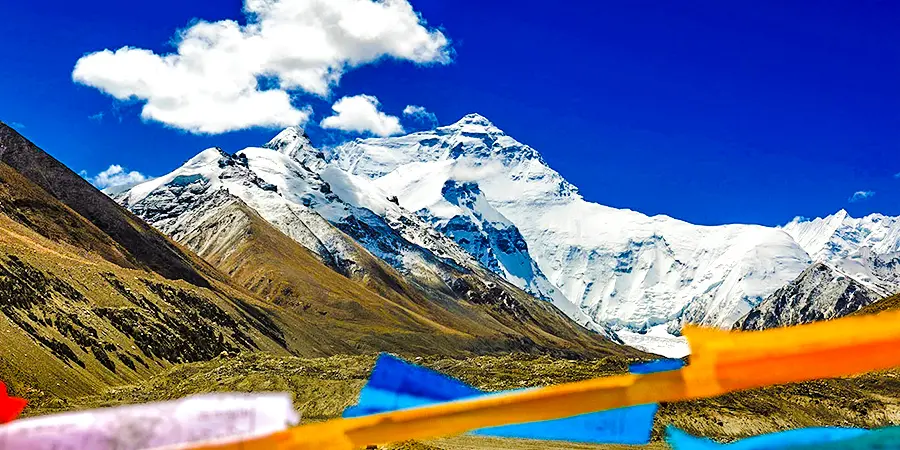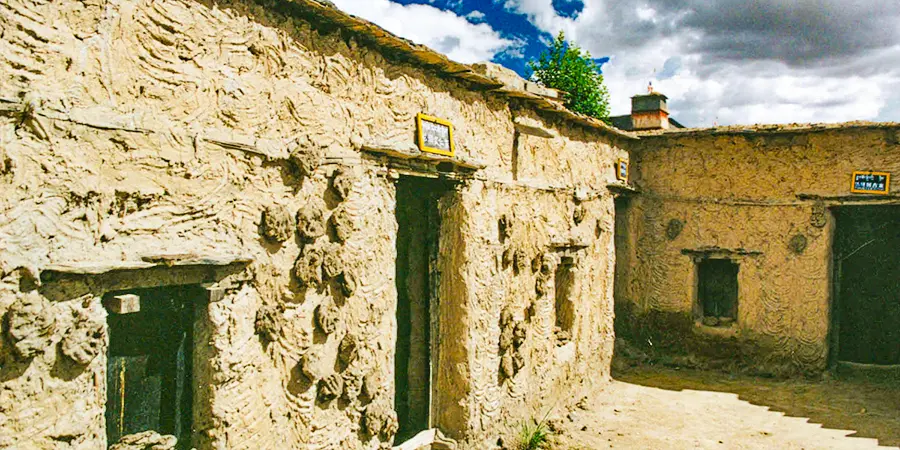Shigatse Weather in May
Season: Spring
In May, Shigatse experiences a generally warm climate, yet there is a significant temperature variation between day and night, with mornings and evenings feeling like winter's chill and midday warmth resembling spring or even hinting at summer's heat.
Additionally, May in Shigatse sees little rainfall and enjoys abundant sunshine. The mountainous regions, particularly around Everest Base Camp, are windy, with the weather predominantly clear and dry.
Averages for Shigatse Weather in May
High Temperature: 19°C / 66°F
Low Temperature: 4°C / 39°F
Rainy Days: 4 days
Rainfall: 24mm
Sunrise: 7:05~7:22
Sunset: 20:40~20:58
Why Visit Shigatse in May
1. Ideal Climate for Travel
May in Shigatse boasts a pleasant climate, with plenty of sunny days and moderate temperatures. The warm, non-scorching sunshine, azure sky, and leisurely clouds create an inviting atmosphere for outdoor activities.
2. Perfect for Everest Base Camp
With warmer temperatures and abundant sunny days, May is also ideal to explore the must-visit Everest Base Camp and catch the magnificent sight of the mountain glowing golden at dawn or in the twilight, without the need for cumbersome clothing.
Tip: Skip visiting Shigatse during the first five days of May, 2026, the Labor Day holiday in China, to avoid inflated costs due to the tourist crowds.
Packing Guide for a May Trip to Shigatse
Clothing: In May, layer up with long-sleeved shirts or thin sweaters, and always pack a warm coat or down jacket for colder moments. As the day warms up, shed layers to stay comfortable.
Accessories: Scarves, hats, and gloves are essential for keeping the chill at bay during Shigatse's cooler mornings and evenings in May.
Footwear: In this ideal month for hiking, invest in comfortable, non-slip, and supportive hiking or mountaineering boots to ensure an even more enjoyable trip in Shigatse.
Sun Protection Items: High-SPF sunscreen, sunglasses, and sun hats are required for Shigatse's intense UV rays in May, 2026.
Moisturizing Products: Keep your skin and lips hydrated with moisturizing cream and lip balm for Shigatse's dry climate in May can take a toll on them.
|
|
Top Shigatse Attractions to Visit in May
1. Everest Base Camp
On May’s clear days, at the first light of dawn or in the evening twilight, stand at Everest Base Camp and gaze up at the majestic Mount Everest. The golden shimmer of the snow and the fresh mountain air form an ideal setting for an adventure of a lifetime.
As night falls, lie outside your tent and gaze up at the starry sky, with the Milky Way hanging low and seemingly within arm's reach, offering a view of the cosmos that you won't find anywhere else.
Towards the end of May, the azaleas on the eastern slope of Mount Everest burst into a dazzling pink sea. For those with good physical stamina, it is a must-do activity to trek to the eastern slope to witness the blossom against the high-mountain snow line.
 |
| Mount Everest |
2. Zhangmu Town
Descend southwest from Everest Base Camp to Zhangmu Town to witness landscapes that encapsulate the beauty of all four seasons, including rolling grasslands, picturesque waterfalls, and lush forests of banyan trees and bamboo, all within a single day.
Along the route, the warm and humid Zhangmu Valley, adorned with gentle streams and shrouded in mist, like a hidden fairyland on earth, is greeting you to take a hike.
Upon arrival, see Zhangmu Town’s harmoniously blended architecture of ancient wooden houses and modern buildings perched on the mountainside. From here, it's a straightforward journey to Kathmandu to experience Nepal’s rich culture and traditions.
3. Pala Manor
In May, Pala Manor, the finest-preserved Tibetan manor of slave owners, is invigorated by the green trees and the flowers in full bloom.
Inside, prepare to be surprised by the manor's immense treasures from exhibited jewels, furs, vintage LV bags from the 1940s, Rolex watches, gramophones, cameras, and even ritual instruments made from human bones.
But what about the displayed shackles and whips? Find the answer at the serf quarters of roughly 150 square meters that accommodates over 60 serfs. Strolling at these cramped, low-ceilinged rooms, akin to cages, it's easy to see how bleak the lives of serfs in old Tibet were.
 |
| Serf Quarter, Pala Manor |
- Last updated on Aug. 15, 2025 by Demi Li -

